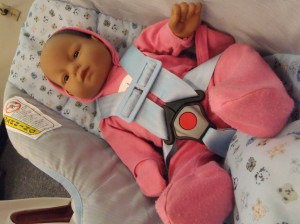Students Experience Parenthood Through Child Development Course
 According to TeenHelp.com, every year about 820,000 female teenagers become pregnant. Teen pregnancy has been on the rise for the past several years, and it is becoming increasingly common to see pregnant teenage girls and teen parents. At Parkway North, students have the option of taking a semester long course called Child Development to learn about child birth, disorders, and a variety of other subjects. During this course the students are required to take home a mechanical baby and care for it as if it was their own for one weekend.
According to TeenHelp.com, every year about 820,000 female teenagers become pregnant. Teen pregnancy has been on the rise for the past several years, and it is becoming increasingly common to see pregnant teenage girls and teen parents. At Parkway North, students have the option of taking a semester long course called Child Development to learn about child birth, disorders, and a variety of other subjects. During this course the students are required to take home a mechanical baby and care for it as if it was their own for one weekend.
“I think teen pregnancy is a big problem in our society because it’s been increasing almost every year, but I feel like we need to know about the effects of having sex at a young age, and how our lives can be affected by it,” said junior Jada Smith.
Most students of Parkway North take Child Development to experience the baby simulation and learn what it would be like if they were to child have a child of their own.
“I’m excited to take home the baby to see how the baby actually works and how you have to pay attention to them and tend to their needs,” said sophomore Melissa McDowell.
“After taking care of the mechanical baby for a weekend, many of the students begin to adopt a different look on having a child in the future and begin to realize that they’re not quite ready to be a parent in the near future.
“I think it’s great to do the baby simulation because the media glamorizes teen pregnancy so much, like Teen Mom. It is so much [work] and [teens] don’t realize that they’re actually taking care of a human being and seeing how everything they do affects that child,” said senior Courtland Ward.
“The hardest part about the baby simulation would be having to wake up all the time to feed and change the baby. That was hard and I most definitely won’t do it that again,” said McDowell.
Throughout the course of Child Development, the main purpose is to help students understand the development of children, and to help students make wise choices when dealing with children.
Written by Jamie Powell — Print Community Editor